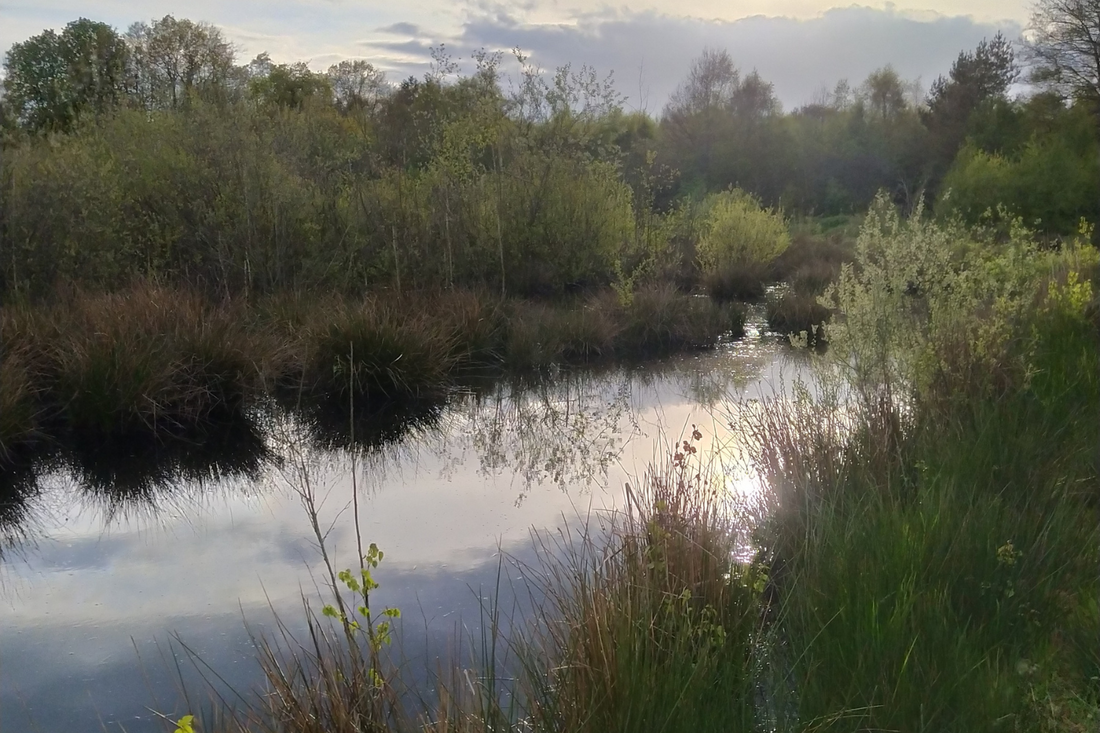FLSK x German Wildlife Foundation: What's happening in the Aschhorner Moor?

Since 2023, FLSK has been supporting the natural idyll of Aschhorner Moor in Lower Saxony with a donation. And we are incredibly proud of what the German Wildlife Foundation has achieved in this climate-relevant habitat with our help since then. We'll just say: Moor water monitoring stations. You can find out what these are and why the installation is a cause for celebration here. Also read what's planned for 2025.
Protects the moor from drying out: Moor water measuring points
Are you already a bog fan? If not, it's about time. Bogs are not only beautiful, but also important players in the fight against climate change. In their damp shallows, they bind large amounts of carbon by preserving dead plant remains in the oxygen-poor soil. This means they decompose very slowly, and the carbon they contain remains locked away for centuries or even millennia.
However, this only works if the moor actually stays wet. Dried-out moors release large amounts of CO2 and other greenhouse gases. This is why the moor water monitoring stations in the Aschhorn Moor are so important. In our last Moor Love Letter, we reported that the German Wildlife Foundation planned and ordered the level probes needed for the measurements. In 2024, 10 fully equipped monitoring stations were installed across the moor, partly with donations from FLSK.

How water management works in the moor
Some areas of the moor have become too dry in recent years. Birch trees have taken up residence there, casting unfavorable shade on the peat mosses. A vicious cycle that leads to increasing dryness and, in the long run, damages the moor. However, if the moor has enough water, the birch trees stay away, and the peat mosses thank the light by stimulating growth. Everything returns to its natural balance.
The monitoring stations we support are making a practical contribution to preserving the Aschhorn Moor. Sensors are installed at the monitoring stations to measure the water level and report it wirelessly. This allows experts to immediately detect when the moor is no longer sufficiently saturated with water and take corrective action.
Measures planned for 2025 in the Aschhorner Moor
This year, we are once again supporting the German Wildlife Foundation in its important work. The following projects are planned:
-
Butterfly monitoring: Special butterfly species live in the Jungclausheide, a particularly pristine part of the moor. The monitoring is intended to help record their populations for the first time and learn about measures to protect them.
-
Neophyte control: You're probably familiar with the strongly scented Himalayan balsam, which is spreading invasively in some places and damaging natural ecosystems. This fast-growing plant, which grows up to 2 meters tall, is to be removed from the edges of the Aschhorn Moor before it becomes a problem.
-
Wildlife cameras and photo monitoring: Many shy animals roam the newly created wilderness of the moor. To avoid disturbing them, but still allow observation, wildlife cameras will be installed. Photo monitoring will regularly capture images of the surroundings at other photo points to reveal slow changes.
With our regular reports from the Aschhorn Moor, you have the chance to experience nature conservation firsthand on your doorstep. So please stop by again and share in the joy!

Learn more about the FLSK Future Fund and the projects we support.
Image sources: GLS Future Foundation Development
- Engraveable.
FLSK coffee cup
500 ml · stainless - all natural
- Engraveable.


FLSK drinking bottle
500 ml · midnight
- - 10 %
- Engraveable.





